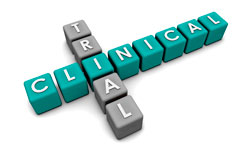Clinical Trial Details
— Status: Completed
Administrative data
| NCT number |
NCT05239091 |
| Other study ID # |
FTRinjection |
| Secondary ID |
|
| Status |
Completed |
| Phase |
N/A
|
| First received |
|
| Last updated |
|
| Start date |
August 1, 2022 |
| Est. completion date |
August 22, 2022 |
Study information
| Verified date |
August 2022 |
| Source |
Istanbul Physical Medicine Rehabilitation Training and Research Hospital |
| Contact |
n/a |
| Is FDA regulated |
No |
| Health authority |
|
| Study type |
Interventional
|
Clinical Trial Summary
Myofascial pain syndrome is a disease characterized by pain over the trigger point in a taut
muscle band. After the correct diagnosis is made, many treatment methods can be applied.
One of these treatments is the treatment with prolotherapy injection. Proliferant reveals
defense mechanisms remove them and then start the healing process in the damaged area.
Usually, dextrose water is used. Lidocaine is an anesthetic. With lidocaine injection, the
passage of painful stimuli is prevented and the opioid system is activated. The aim of the
study is to compare the efficacy of prolotherapy and lidocaine treatment in the myofascial
pain syndrome.
Description:
This is a prospective randomized controlled study. The population of the study consists of
volunteer patients who can apply to Istanbul Physical Therapy and Rehabilitation Training and
Research Hospital, and meet the inclusion criteria. Twenty-eight people will be selected from
the participants who volunteered for the study and will be divided into the study group and
control groups with the permutation block randomization method. At the beginning, all
patients will be asked about their gender, age, body mass index, education level, occupation,
duration of complaint, previous treatments, and the last time received treatment.
Patients will be recruited equally to the control and study groups, with 14 patients in each
group. 15% dextrose injection treatment will be applied to the study group. 2% lidocaine
injection treatment will be applied to the control group. The subjects will be asked to sit
on a chair and the trigger point will be determined in the upper trapezius muscle in both
groups. A total of 3 sessions of injection treatment will be applied to the trigger points
(at the beginning, at the 2nd, and 4th weeks). It will be planned to be 2 weeks between each
injection session. 1 month after the third session injection, patients will be called for
control purposes.
The application will be made using a 25 gauge injector. Before the injection, the skin will
be cleaned with alcohol and then dried. All patients will be injected into the trigger points
in the upper trapezius muscle. Trigger point injection, on the other hand, is the compression
of the isolated skin with the help of the thumb and middle finger and advancing the needle
into the muscle at a 90-degree angle. Before the injection, a puncture will be made to make
sure the needle is not in the blood vessel. Some of the mixtures will be injected into the
trigger point and the rest around the trigger point. The same injection technique will be
applied in both the control and study groups. Measurements will be made at the beginning
(week 0), week 2, and week 4 before and after the injection when they come to the 1-month
control. Adverse events related to injections will be recorded.
